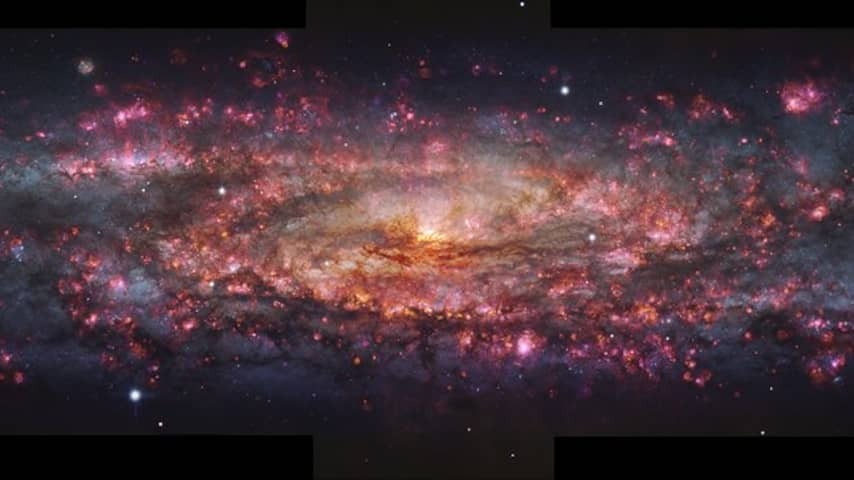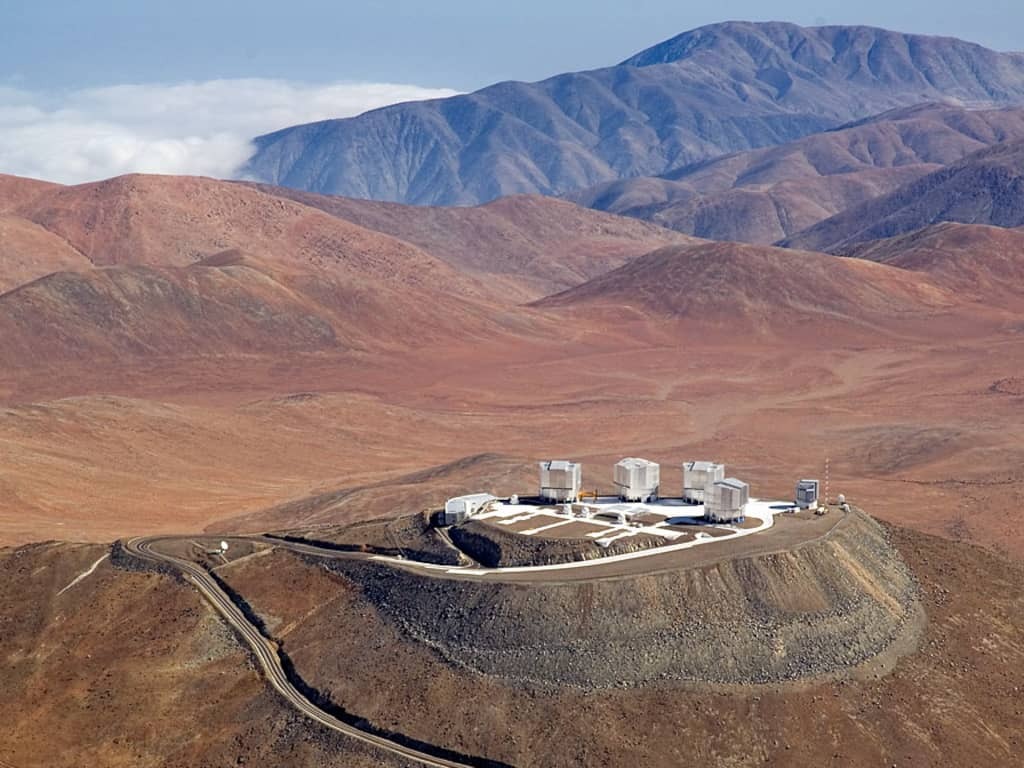
Astronomers have taken a photo of the Sculptor galaxy. The photo, with many details and over four thousand different colors, provides much more information than old photos: five hundred new gas and dust nebulae have already been discovered.
Researchers have taken more than fifty hours of images to compile the photo. That photo consists of a hundred shots and maps the entire galaxy of almost 65,000 light-years in size, reports the European Southern Observatory (ESO). The photo was taken using the Very Large Telescope (VLT), which stands at an altitude of over 2,500 meters in northern Chile.
The photo is a major improvement over photos taken with older techniques. Only a handful of colors could be seen on those, while over four thousand colors can be seen on the new photo.
Gas, light and dust in the galaxy emit light: different substances have different colors. Because the photo has more details, researchers can use it to study the development of galaxies.
The Sculptor galaxy is very suitable for such research. It is relatively close to our Milky Way galaxy, at a distance of about 11 million light-years. This means that researchers can zoom in well on small parts of the galaxy from Earth. But at the same time, the distance to Sculptor is also large enough to be able to view it in its entirety.
Photo of the entire Milky Way is not possible
Especially because of that last aspect, Sculptor is a more favorable research object than our Milky Way. Because the earth is inside the galaxy, astronomers cannot capture the Milky Way in its entirety. “The photo offers us the rare opportunity to connect physics on a small scale with the big picture,” says astronomer Enrico Congiu. He is in charge of the research in which the photo was compiled.
The photo provides information about the movement, age and chemical composition of stars. In addition, the photo provides information about the movement of gas within galaxies.
Astronomers have already analyzed the first data from the photo. That ensured that researchers discovered about five hundred planetary nebulae. These are areas of gases and substances that come loose from dying stars. Astronomers can use information about these nebulae as a tool to determine distances between different galaxies.
The photo will still be used for various future studies, including how gas flows through the galaxy, changes composition and ultimately forms stars. “How such small-scale processes can have such a large impact on a galaxy that is thousands of times larger is still a mystery,” says Congiu.
